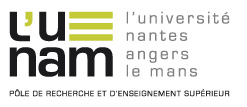Why and how to plant native plants in urban areas? State of the art and perspectives in Reunion Island with the urban component 'Bwa de Kartié' of the plan 'One million trees for Reunion Island'
Pourquoi et comment planter des plantes indigènes en milieu urbain ? État des lieux et perspectives à La Réunion avec le volet urbain « Bwa de Kartié » du plan « 1 million d’arbres pour La Réunion »
Résumé
Reunion Island is facing an important loss of biodiversity which has been increasing since the arrival of Man on the island from the 17th century. Invasive alien species, initially introduced on the island to meet needs (agriculture, forestry, ornamental...), are today the main cause of the alteration of the Reunionese ecosystems. Beyond this loss of biodiversity, which is materialized by a deep modification of natural landscapes, it is the history and culture of the island which are also affected. The stakes of safeguarding and valorization of this natural heritage are high. The plan 'one million trees for Reunion Island' set up by the Department of Reunion Island, tries to bring an answer to these stakes by being part of a partnership and territorial approach of planting native and endemic trees throughout the island. In addition to the ecological issues, the CAUE of Reunion Island, which participates in the implementation of the project, must provide answers on the landscape and social level, particularly within the urban spaces of Reunion Island with the 'Bwa de Kartié' component.
La Réunion fait face à une importante perte de biodiversité qui n’a eu cesse de s’intensifier depuis l’arrivée de l’Homme sur l’île à partir du XVIIè siècle. Les espèces exotiques envahissantes, initialement introduites sur l’île pour répondre à des besoins (agriculture, sylviculture, ornement…), sont aujourd’hui la cause principale de l’altération des écosystèmes réunionnais. Au-delà de cette perte de biodiversité, qui se matérialise par une modification profonde des paysages naturels, c’est l’histoire et la culture de l’île qui s’en retrouvent également affectées. Les enjeux de sauvegarde et de valorisation de ce patrimoine naturel sont grands. Le plan ‘un million d’arbres pour La Réunion’ mis en place par le Département de La Réunion, tente ici d’apporter une réponse à ces enjeux en s’inscrivant dans une démarche partenariale et territoriale de plantations d’arbres indigènes et endémiques à travers l’île. Outre les enjeux écologiques, le CAUE de La Réunion qui participe à la mise en place de ce projet, doit venir apporter des réponses sur le plan paysager et social, notamment au sein des espaces urbains réunionnais avec le volet ‘Bwa de Kartié’.

